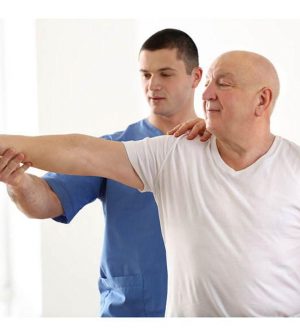- Understanding the Connection Between Anxiety and Depression
- How Daily Prunes Can Influence Cholesterol and Inflammation
- When to Take B12 for Better Absorption and Energy
- Epsom Salts: Health Benefits and Uses
- See What Saffron Can Do for Sleep and Heart Health
- 6 Common Mistakes to Avoid Before Your Physical
- Can Sweating Really Help You Beat a Cold?
- Strengthening Your Relationship: Practical Strategies
- Skip Storing This Everyday Product in the Fridge Door
- Green Tea + B3 Pairing May Boost Brain Health
Had a Stroke? Get These Professionals on Your Rehab Team

When someone has a stroke, many professionals come together to help the patient recover.
The rehabilitation plan varies depending on which parts of the body were affected by the stroke and the type and severity of damage.
Patients will have a team of physicians to guide and coordinate their long-term care. It often includes a physiatrist who specializes in physical medicine and rehabilitation; a neurologist; internist; family practice physician; and a geriatrician who specializes in working with seniors.
In addition, a variety of professionals help patients to restore lost skills, according to the U.S. National Institute of Neurological Disorders and Stroke.
For example, a rehabilitation nurse can help a stroke patient relearn the skills they need for basic activities of daily living. This nurse also provides information about routine health care, including how to manage bladder and bowel issues, caring for the skin, following a medication schedule, moving from bed to wheelchair and back, as well as special needs for those with diabetes.
Physical therapists help patients with disabilities related to motor and sensory impairments. This can include doing exercises that strengthen muscles and improve coordination. Patients can work to regain a range of motion. One activity may be constraint-induced therapy, in which an unaffected limb is immobilized so the patient can work on regaining function in limbs affected by the stroke.
An occupational therapist will help the patient relearn personal grooming skills, house cleaning and preparing meals, while a therapeutic recreation specialist can help those recovering regain some of their leisure activities.
Because stroke can affect language abilities, a speech-language pathologist is part of the team. This professional helps patients learn to use language again or develop different ways of communicating, as well as improving the ability to swallow.
Some patients also have a vocational therapist to help those who need to work identify strengths, develop resumes, and assist with job searches and referrals.
A social worker will help with other needs, including assisting with financial decisions, choices about living situations, while a psychologist can work with the patient on mental health, as well as in assessing thinking skills.
More information
The Stroke Foundation has more about rehabilitation grants for stroke survivors.
SOURCE: U.S. National Institute of Neurological Disorders and Stroke, news release
Source: HealthDay
Copyright © 2026 HealthDay. All rights reserved.










